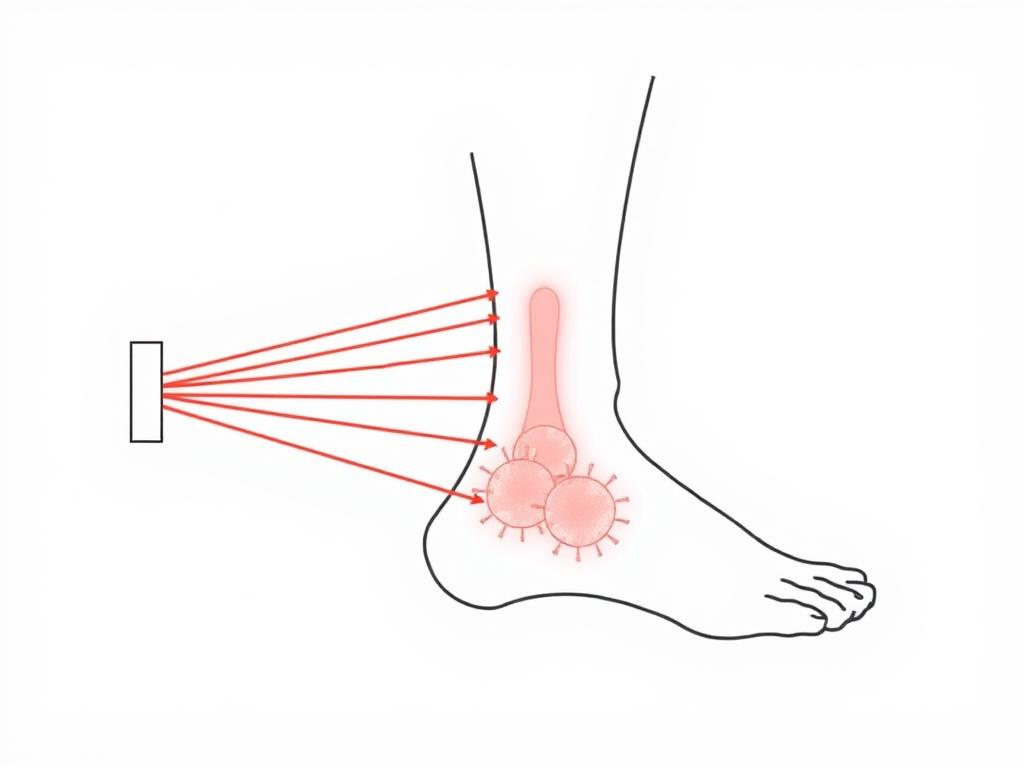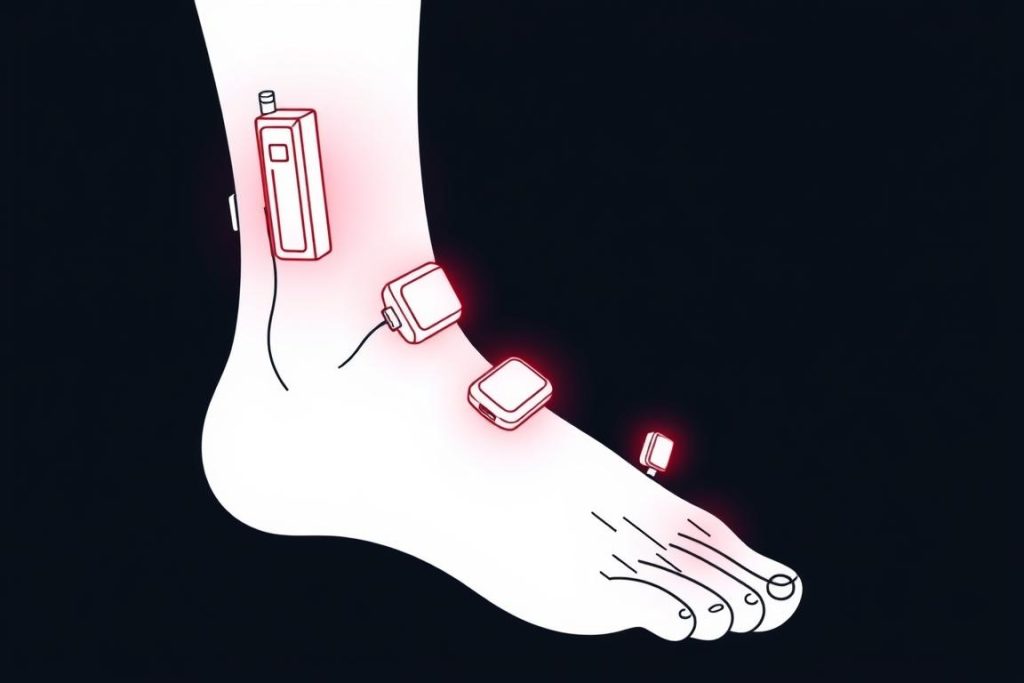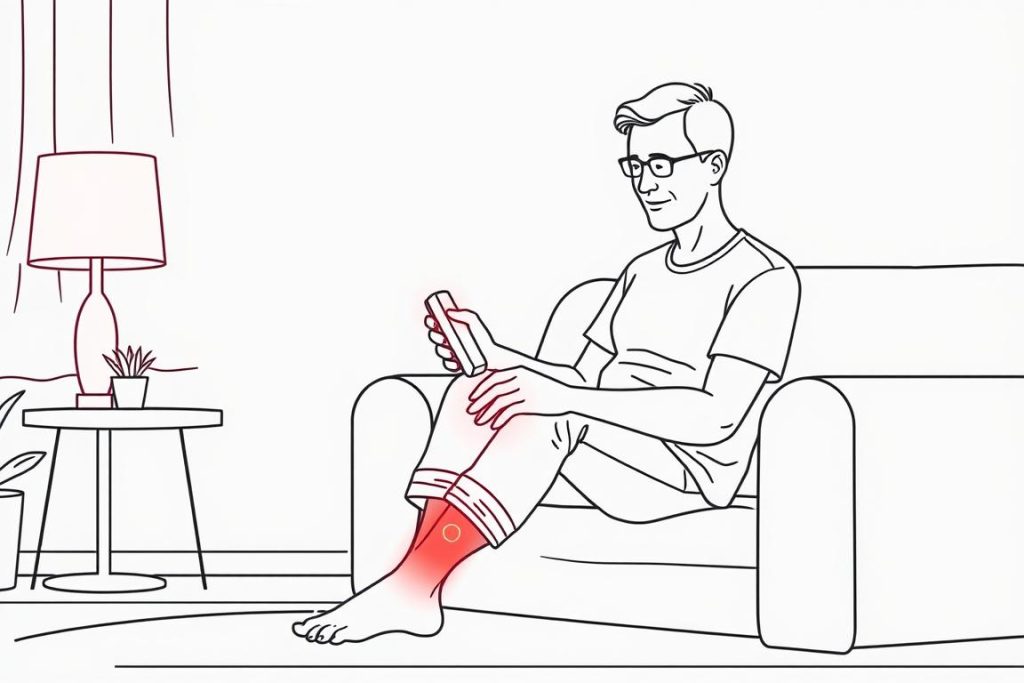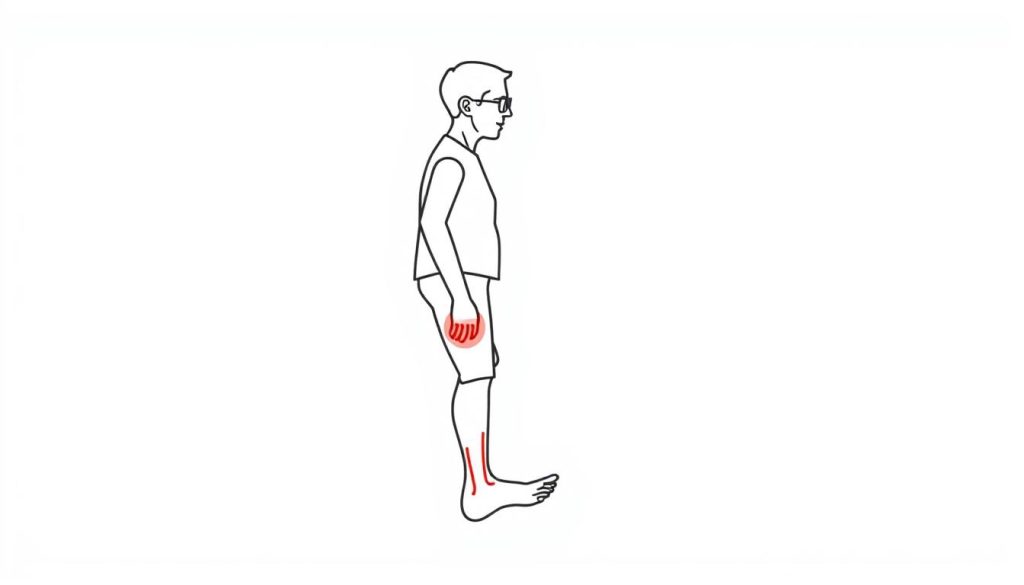It happens in an instant—a misstep on uneven ground, a twist during your morning jog, or an awkward landing after a jump. Suddenly, you’re dealing with a sprained ankle that threatens to sideline you for weeks. While traditional recovery methods like RICE (rest, ice, compression, elevation) remain the standard first response, more athletes and everyday active people are turning to red light therapy for sprained ankle recovery to get back on their feet faster.
Red light therapy, also known as photobiomodulation or low-level laser therapy (LLLT), uses specific wavelengths of red and near-infrared light to stimulate cellular energy production, reduce inflammation, and accelerate the healing process. Unlike ultraviolet light, these wavelengths are completely safe and don’t damage tissues—instead, they work at the cellular level to enhance your body’s natural recovery mechanisms.
As someone who’s researched recovery methods extensively, I’ve seen compelling evidence that red light therapy can significantly reduce downtime from ankle sprains. Let’s explore how this technology works, what the research says, and which devices might be worth considering for your recovery toolkit.
Understanding Ankle Sprains and Recovery Challenges
Ankle sprains account for approximately 15% of all sports injuries, with over 25,000 occurring daily in the United States alone. These injuries happen when the ligaments that support the ankle stretch beyond their limits or tear, often resulting from a sudden twist or roll of the ankle joint.
The traditional recovery timeline for a sprained ankle can be frustratingly long:
- Grade 1 (mild): 1-3 weeks
- Grade 2 (moderate): 3-6 weeks
- Grade 3 (severe): 3-6 months
During this time, inflammation, pain, and limited mobility can significantly impact your daily activities and exercise routine. The longer recovery takes, the more muscle atrophy and fitness loss occurs—creating a challenging cycle for active individuals.
This is where red light therapy enters the picture as a complementary approach that may help accelerate the natural healing process without side effects.
How Red Light Therapy Works for Ankle Sprains

Red light therapy operates on a fascinating biological principle: certain wavelengths of light can penetrate skin and tissue to reach cells, where they stimulate the mitochondria—your cells’ energy powerhouses. This process increases production of adenosine triphosphate (ATP), the energy currency that powers cellular repair and regeneration.
For sprained ankles specifically, red light therapy offers several key benefits:
Reduced Inflammation
Research by Alves et al. (2013) demonstrated that red light therapy can reduce inflammatory markers by up to 40% within 72 hours of application. This helps control the initial swelling that contributes to pain and limited mobility in ankle sprains.
Accelerated Tissue Repair
Houreld et al. (2010) found that cells exposed to red light wavelengths showed significantly faster regeneration rates. For ankle sprains, this means potentially quicker healing of damaged ligaments and surrounding tissues.
Improved Circulation
Red light therapy enhances microcirculation in the treatment area, delivering more oxygen and nutrients to damaged tissues while removing waste products more efficiently.
Pain Relief
Many users report reduced pain levels after red light therapy sessions, likely due to both decreased inflammation and the release of endorphins—your body’s natural pain relievers.
The most effective wavelengths for treating ankle sprains typically fall within two ranges:
- Red light (630-660 nm): Penetrates skin and superficial tissues, ideal for surface inflammation
- Near-infrared light (810-850 nm): Reaches deeper tissues including ligaments and tendons
A comprehensive study by Leal Junior et al. (2015) found that athletes receiving red light therapy returned to play nearly 10 days faster than control groups following ankle sprains. This significant time savings makes red light therapy an attractive option for anyone looking to minimize downtime from this common injury.
Choosing the Right Red Light Therapy Device for Ankle Sprains

When selecting a red light therapy device for treating a sprained ankle, several factors deserve consideration: treatment area coverage, wavelength options, power output (irradiance), and practical usability. Let’s examine some leading options on the market.
Key Features to Look For
Effective Wavelengths
Look for devices that offer both red (630-660 nm) and near-infrared (810-850 nm) wavelengths for comprehensive treatment of both surface and deep tissues in the ankle.
Sufficient Power Output
Higher irradiance (measured in mW/cm²) means more photons reaching your tissues and potentially shorter treatment times. Quality devices typically deliver at least 30-100 mW/cm² at the recommended treatment distance.
Recommended Device Options
Portable Targeted Devices
The Total Spectrum Mini (12 in × 12 in with 72 LEDs) offers an excellent portable option for targeted ankle treatment. Its compact size makes it ideal for direct application to the ankle joint while sitting at a desk or relaxing on the couch.
The device’s seven wavelength options include the critical 660 nm and 850 nm ranges most beneficial for sprained ankle recovery. Its pre-built “Pain & Inflammation” mode takes the guesswork out of treatment settings.
Mid-Size Options
For treating both ankles simultaneously or covering larger areas around the joint, PlatinumLED’s BIOMAX series offers impressive irradiance levels that may reduce necessary treatment time. Their targeted approach to power delivery has earned them a reputation for efficiency.
Joovv’s modular design allows you to start with a smaller unit and expand your system over time—a flexible approach that adapts to changing needs and multiple treatment areas.
Full-Body Systems
If you’re an athlete dealing with multiple injury sites or want comprehensive recovery support, the Total Spectrum Ultra with its motorized stand allows for convenient full-body treatment. At 64 in × 12 in with 480 LEDs, it provides extensive coverage while you relax.
Mito offers more budget-friendly entry panels that still deliver effective treatment, though they may require longer session times due to lower irradiance levels.
Safety Note: Quality red light therapy devices should have minimal EMF emissions and flicker. The Total Spectrum series offers zero measurable EMF at ≥10 cm and
Effective Treatment Protocol for Sprained Ankles

Developing an effective treatment protocol is crucial for maximizing the benefits of red light therapy for your sprained ankle. Based on clinical research and practitioner recommendations, here’s a comprehensive approach:
Timing and Frequency
Acute Phase (First 72 Hours)
During the initial inflammatory phase, shorter, more frequent sessions can help manage swelling:
- 3-5 minutes per treatment area
- 2-3 times daily
- Position: Elevated ankle with light directed at the injured area from 6-12 inches away
Recovery Phase (After 72 Hours)
As acute inflammation subsides, longer sessions support tissue repair:
- 10-15 minutes per treatment area
- 1-2 times daily
- Position: Multiple angles to ensure comprehensive coverage of the ankle joint
Integrating with Traditional Treatment
Red light therapy works best as a complement to, not replacement for, established sprain recovery protocols:
RICE Protocol
Continue using Rest, Ice, Compression, and Elevation during the acute phase. Apply red light therapy after ice sessions once the area has returned to normal temperature.
Physical Therapy
Many physical therapists recommend red light therapy immediately before rehabilitation exercises to reduce pain and improve range of motion during the session.
“We’ve found that patients who use red light therapy before their rehabilitation exercises report less pain during the session and often progress through their protocol more quickly.”
Monitoring Progress
Track these key indicators to assess your recovery:
- Pain levels (1-10 scale) before and after treatment
- Swelling measurements (compare to uninjured ankle)
- Range of motion improvements
- Weight-bearing capacity
Most users report noticeable improvements within 1-2 weeks of consistent red light therapy application, though individual results vary based on injury severity and overall health.
The Research Evidence Behind Red Light Therapy for Ankle Sprains
The scientific evidence supporting red light therapy for ankle sprains continues to grow, with several key studies demonstrating promising results:
Clinical Trial Results
A 2016 study published in the Journal of Biophotonics examined 395 athletes with various injuries, including ankle sprains. Those receiving red light therapy returned to play an average of 9.6 days sooner than the control group. The researchers concluded that “photobiomodulation significantly accelerates clinical recovery from ankle sprains without adverse effects.”
Similarly, research by de Almeida et al. (2019) found that participants with grade 2 ankle sprains who received near-infrared light therapy (810 nm) showed a 70% reduction in pain scores after two weeks compared to 30% in the sham treatment group.
Mechanism Studies
Hamblin’s 2018 review in the Journal of Photochemistry and Photobiology explains how red and near-infrared light stimulates cytochrome c oxidase in the mitochondria, increasing ATP production and activating cellular signaling pathways that reduce inflammation and accelerate tissue repair.
This cellular mechanism explains why red light therapy can be effective for a wide range of musculoskeletal injuries, including ankle sprains, by addressing the fundamental processes of tissue healing.
Systematic Reviews
A comprehensive 2020 meta-analysis published in the Archives of Physical Medicine and Rehabilitation examined 17 randomized controlled trials of red light therapy for soft tissue injuries. The analysis concluded that “photobiomodulation therapy demonstrates moderate to strong evidence for reducing pain and inflammation while accelerating functional recovery in acute ligament injuries.”
While more research is always beneficial, the current body of evidence suggests that red light therapy is a safe, effective complementary treatment for ankle sprains when used according to established protocols.
Research-Based Wavelength Recommendation: Studies consistently show that a combination of red (630-660 nm) and near-infrared (810-850 nm) wavelengths provides the most comprehensive benefits for ankle sprains. The Total Spectrum series includes all these critical wavelengths plus additional therapeutic ranges for enhanced results.
Real User Experiences with Red Light Therapy for Ankle Sprains

While scientific research provides the foundation for understanding red light therapy’s effectiveness, real-world user experiences offer valuable insights into practical applications and results. Here are some common patterns reported by users who have applied red light therapy to their sprained ankles:
Athletes’ Perspectives
Competitive and recreational athletes frequently report that consistent red light therapy sessions helped them return to training sooner than expected. Many describe using portable devices like the Total Spectrum Mini during recovery periods between training sessions to maintain progress.
Marathon runners and triathletes particularly note the benefit of being able to continue cardiovascular training while treating ankle injuries, helping maintain overall fitness during recovery.
Everyday Users
Non-athletes with active lifestyles report that red light therapy helped them maintain daily activities during recovery. Many appreciate the non-pharmaceutical approach to pain management, especially those who prefer to minimize medication use.
Users over 50 frequently mention that red light therapy seemed to accelerate recovery compared to previous ankle injuries they experienced before using the technology.
“After spraining my ankle during a trail run, I used red light therapy twice daily alongside traditional RICE protocol. The swelling reduced noticeably faster than with my previous sprain, and I was back to light jogging in just over two weeks instead of the month it took last time.”
While individual experiences vary, the consistent themes of reduced pain, faster functional recovery, and complementary benefits to traditional treatments align with the research findings discussed earlier.
Comparing Red Light Therapy with Other Recovery Methods
| Recovery Method | Pain Relief | Inflammation Reduction | Healing Acceleration | Convenience | Side Effects |
| Red Light Therapy | Moderate to High | High | Moderate to High | High (home use) | Minimal to None |
| RICE Protocol | Moderate | High | Low | High | Minimal |
| NSAIDs | High | High | Low (may delay) | High | Moderate |
| Physical Therapy | Moderate | Low | Moderate | Low | Minimal |
| Ultrasound Therapy | Low to Moderate | Moderate | Low to Moderate | Low | Minimal |
This comparison highlights why many healthcare professionals now recommend red light therapy as a complementary approach alongside traditional treatments. The combination of effectiveness, convenience, and minimal side effects makes it an attractive option for comprehensive sprained ankle recovery.
For optimal results, many physical therapists recommend integrating red light therapy with a structured rehabilitation program. You can learn more about this integrated approach in our guide on combining red light therapy with physical therapy.
Practical Tips for Maximizing Red Light Therapy Benefits
To get the most from your red light therapy sessions for a sprained ankle, consider these practical recommendations based on both research and user experiences:
Optimal Device Positioning
- Position the device 6-12 inches from your ankle for optimal light penetration
- Treat from multiple angles to ensure comprehensive coverage of the injured area
- For deeper sprains, prioritize near-infrared wavelengths (810-850 nm) that penetrate further into tissue
Treatment Timing
- Apply red light therapy after ice treatments once skin has returned to normal temperature
- Consider sessions before rehabilitation exercises to reduce pain during movement
- Consistent daily treatments yield better results than occasional longer sessions
Complementary Approaches
- Continue following your healthcare provider’s recommendations for traditional treatment
- Maintain proper nutrition with adequate protein and anti-inflammatory foods to support tissue repair
- Stay hydrated to optimize cellular function and recovery
Tracking Progress
- Take photos of your ankle daily to visually monitor swelling reduction
- Keep a simple log of pain levels, mobility, and functional capabilities
- Adjust treatment duration based on your response—some people benefit from longer sessions
Pro Tip: For comprehensive ankle treatment, the Total Spectrum Compact (30 in × 12 in with 216 LEDs) provides excellent coverage for both the ankle joint and surrounding tissues. Its seven-wavelength mix ensures you’re targeting tissues at various depths for optimal recovery support. Compare leading panels side-by-side here to find the best option for your specific needs.
For a detailed timeline of what to expect during your recovery process, visit our guide on sprained ankle recovery milestones.
Conclusion: Integrating Red Light Therapy into Your Recovery Plan

Red light therapy represents a promising, evidence-based approach to accelerating recovery from sprained ankles. By stimulating cellular energy production, reducing inflammation, and supporting tissue repair, this non-invasive technology can complement traditional recovery methods and potentially get you back to your activities sooner.
The research increasingly supports red light therapy’s effectiveness for soft tissue injuries like ankle sprains, with studies demonstrating reduced pain, decreased swelling, and faster functional recovery compared to standard treatments alone.
When selecting a device, consider factors like wavelength options, power output, treatment area coverage, and usability. Quality devices like the Total Spectrum series offer the optimal combination of red and near-infrared wavelengths backed by research, with convenient features like pre-programmed treatment modes for different conditions.
Remember that red light therapy works best as part of a comprehensive approach that includes proper medical care, appropriate rest and rehabilitation, and attention to nutrition and overall health. Always consult with your healthcare provider before beginning any new treatment approach, especially for moderate to severe injuries.
Ready to accelerate your ankle sprain recovery?
Explore the top red light therapy devices on the market to find the perfect match for your recovery needs and budget.
— David, independent RLT researcher

